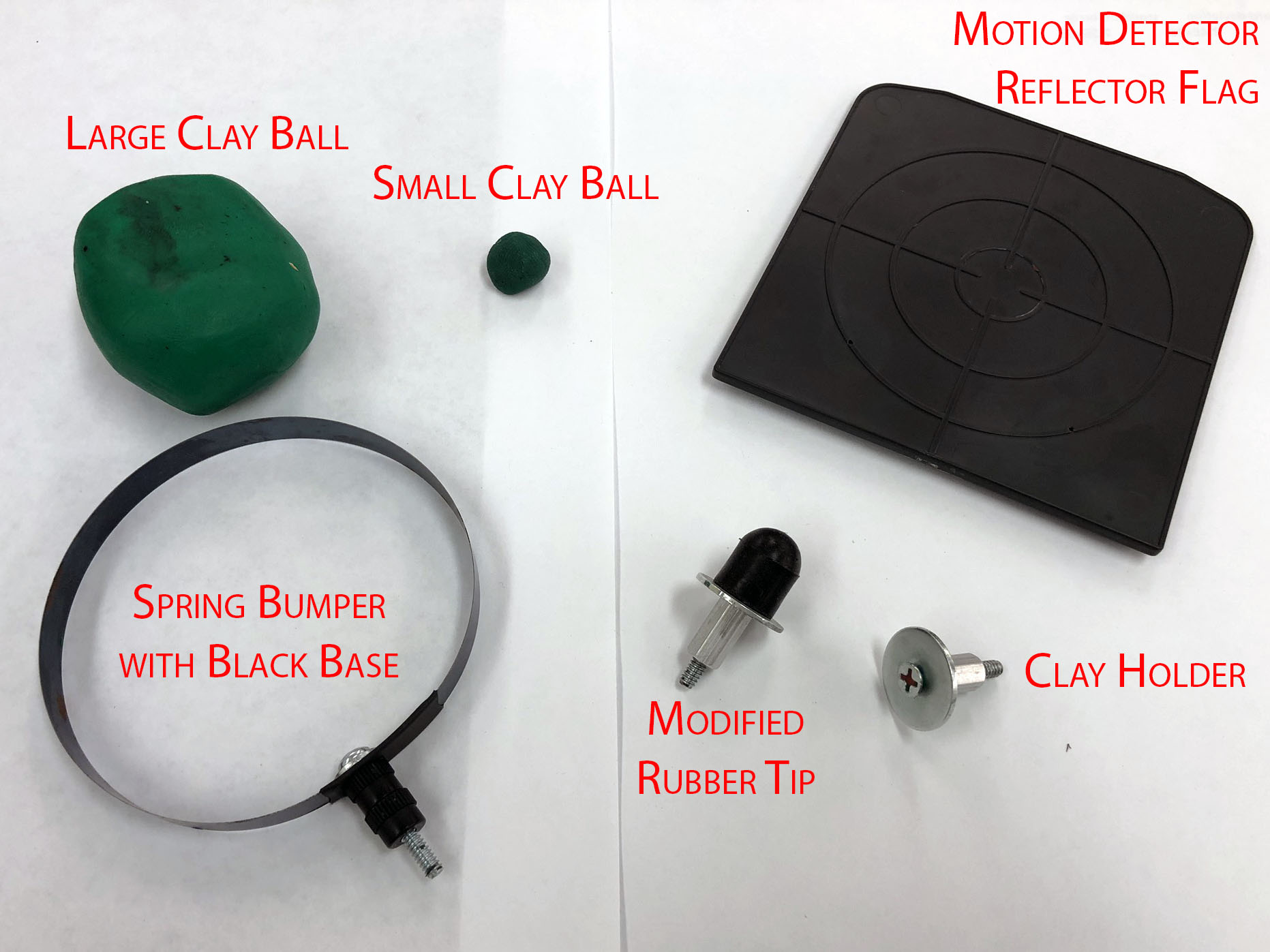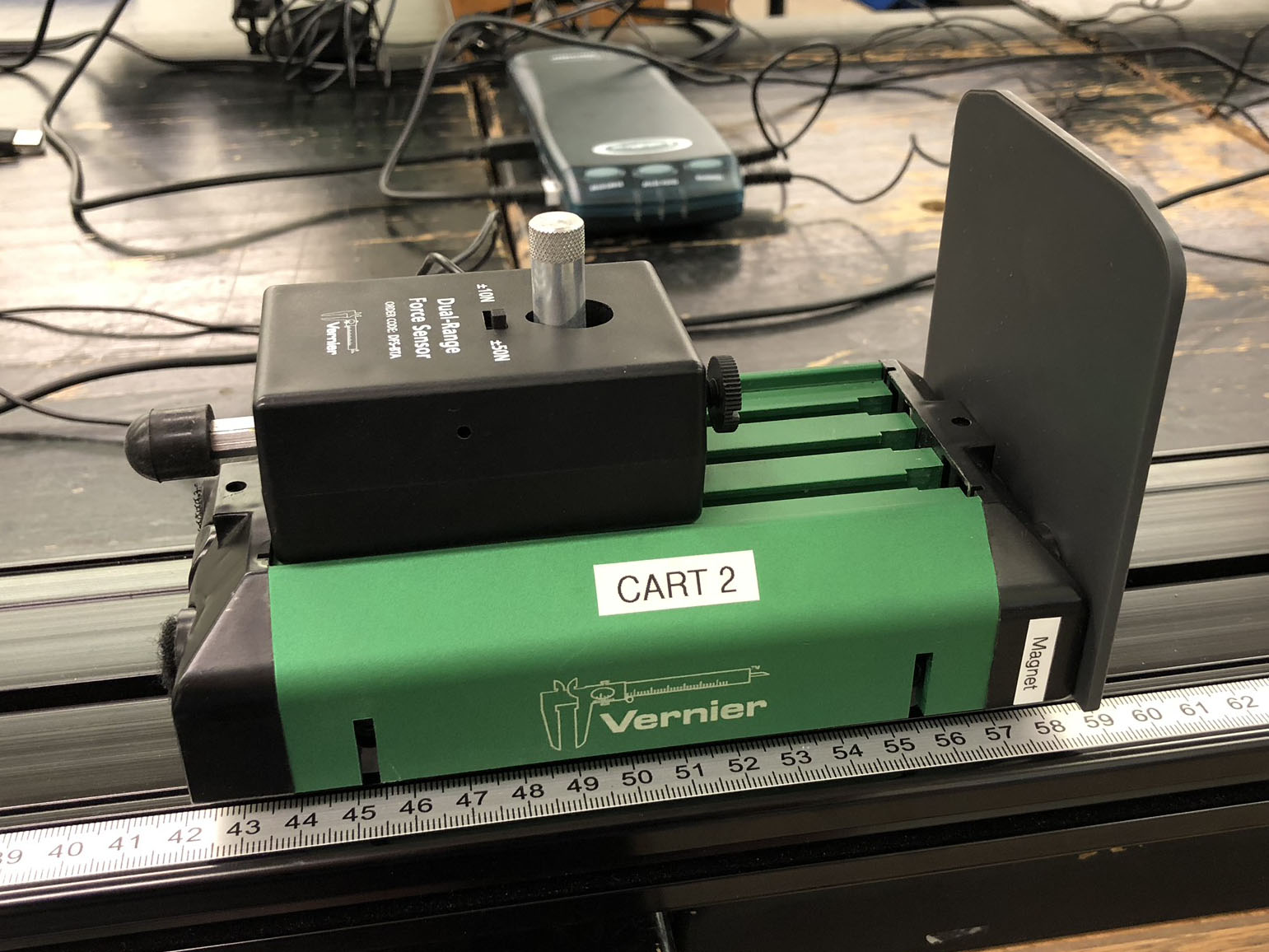- Computers are needed for lab this week
- Up to four electronic balances are needed this week (one for each bench)
- Students will learn about momentum, impulse and collisions
- This is a short lab. Most students finish by 3:00 p.m.
- Note that the instructions refer to a superball, and most students don't know what that is!
- Fall 2023: We purchased new force sensors and they produce completely different force graphs than the older force sensors. The instructions have been rewritten and all is well
- This lab, as well as the next (Newton's Third Law and Conservation of Momentum) does not require a lab journal. All student answers and calculations are written directly into the instructions. Because the instructions are lengthy, I will print copies for each lab section
- Here are the instructions, which are also linked from the Phys103 setup page
- Here are the solutions, along with the two graphs (using the new force sensors) that students will print. The solution sheet contains point deductions for grading
- The lab bench is very busy - lots of wires and equipment used. Since there are two tracks per table, be sure that students use the computer that is connected to their track (yes, this has happened before!) I place the computer to the right of its connected track
- Make sure the force sensor cord is not making contact with the LabPro power cord. This will cause interference!
- An electronic balance has been placed on each lab bench. This is required since the mass of the force sensors can only be checked while they are still connected to the computer interface; disconnecting the force sensors resets all the settings.
- Make sure the motion detector switch is set to Cart mode
- Remind students to put unused accessories back in the provided box when not in use (2 clay blobs, modified rubber tip, clay holder, spring bumper & cart flag). It's easy to lose track of the small parts when they're placed on the bench (Figure #1)
- The cart flag attaches to the side of the cart marked "magnet", as shown in Figure #2
- In the 'clay ball vs. superball' section, students who get unexpected results usually did not perform the drop of the force sensor carefully. Their inability to follow directions is only surpassed by their lack of manual dexterity. Common problems:
- Forgetting to zero the sensor before each drop
- They drop the force sensor too soon or too late, so a flat-line appears. They must wait until the teal Collect button turns to a red Stop button before releasing
- Holding the sensor against the vertical meter stick (to measure drop height), but allowing the sensor to slide down the meter stick
- Not dropping the force sensor vertically so it lands vertically (directly on its tip)
- Not reforming the clay ball between drops, or pressing the large clay ball too far on the tip so that it contacts the black plastic body of the force sensor
- Here are the force results they should find for dropping the force sensor. I still need to tweak the experiment in the future so that students can get reliable results
- Drop #1 & #2: FRubber (10 cm) > FSmall clay (10 cm)
- Drop #3 & #4: FSmall clay (20 cm) and FLarge clay (10 cm) > FSmall clay (10 cm)
- Note that it does not matter that drop #1 is higher than #3. These are not compared!

Figure #1

Figure #2